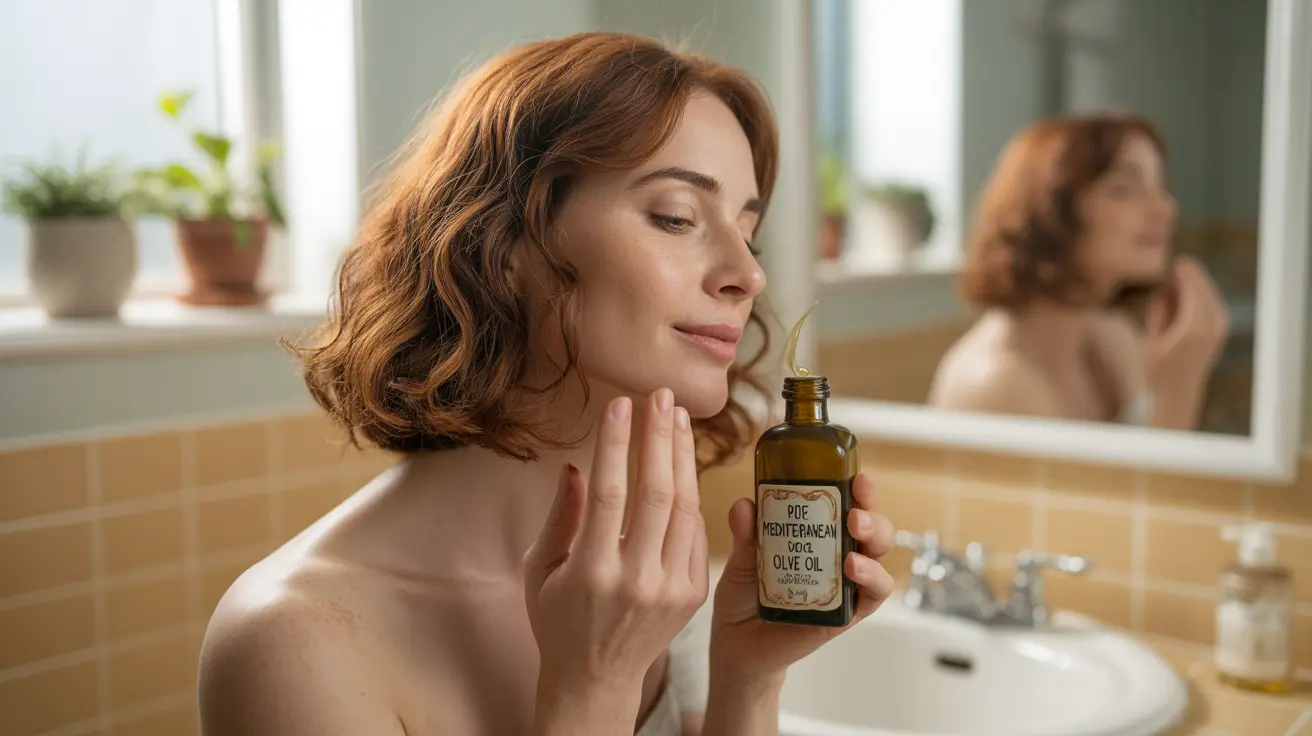Olive oil has been a treasured beauty secret for centuries, offering numerous benefits for hair health and appearance. This natural ingredient, rich in antioxidants and healthy fats, can transform dry, damaged hair into softer, more manageable locks. Understanding how to properly use olive oil for hair care can help you maximize its potential benefits while avoiding common pitfalls.
In this comprehensive guide, we'll explore the science-backed benefits of olive oil for hair care, proper application techniques, and important considerations for different hair types. Whether you're dealing with dry scalp, brittle strands, or simply want to enhance your hair's natural shine, olive oil might be the natural solution you're looking for.
The Science Behind Olive Oil's Hair Benefits
Olive oil's effectiveness for hair care stems from its rich composition of beneficial compounds. It contains vitamin E, polyphenols, and omega-3 fatty acids, which work together to nourish and protect hair strands. These nutrients can penetrate the hair shaft, helping to strengthen and protect it from environmental damage.
Key Nutritional Components
The primary beneficial components in olive oil include:
- Vitamin E: A powerful antioxidant that helps protect hair from damage
- Oleic acid: A moisturizing agent that helps soften hair
- Squalene: A natural emollient that conditions and adds shine
- Polyphenols: Compounds that help protect against oxidative stress
How to Apply Olive Oil to Your Hair
Proper application is crucial for achieving optimal results with olive oil hair treatments. The method you choose should depend on your hair type and specific needs.
Pre-Shampoo Treatment
- Warm the olive oil slightly to enhance absorption
- Section clean, dry hair and apply oil from roots to tips
- Gently massage the scalp to stimulate blood flow
- Leave on for 30-60 minutes before shampooing
- Use a gentle, sulfate-free shampoo to remove the oil
Deep Conditioning Treatment
- Apply olive oil to damp hair after shampooing
- Focus on the mid-lengths and ends
- Cover with a shower cap or warm towel
- Leave for 15-30 minutes
- Rinse thoroughly with cool water
Best Practices and Considerations
While olive oil can be beneficial for many hair types, it's important to use it correctly to avoid potential issues. Consider these factors when incorporating olive oil into your hair care routine:
Choosing the Right Oil
- Select extra virgin olive oil for the highest quality
- Ensure the oil is pure and free from additives
- Store in a cool, dark place to maintain freshness
- Check for rancidity before each use
Application Tips
- Start with a small amount to avoid oversaturation
- Focus on dry or damaged areas
- Avoid applying too much to the scalp if you have oily hair
- Use more frequently on thick, coarse, or very dry hair
- Reduce frequency for fine or thin hair
Frequently Asked Questions
What are the main benefits of using olive oil for hair care?
Olive oil provides deep moisturization, helps reduce frizz, adds shine, and can protect hair from damage. Its antioxidant properties help protect against environmental stress, while its moisturizing effects can help prevent breakage and split ends.
How should I apply olive oil to my hair for the best moisturizing and conditioning effects?
For best results, warm the oil slightly and apply it to clean, sectioned hair. Focus on mid-lengths and ends, using more or less depending on your hair thickness. Leave it on for 30-60 minutes before shampooing, or use it as a leave-in treatment on damp hair.
Can olive oil help with hair growth or prevent hair loss?
While olive oil itself doesn't directly stimulate hair growth, it can create optimal conditions for healthy hair growth by nourishing the scalp, reducing breakage, and protecting existing hair. The scalp massage during application can also help stimulate blood flow to hair follicles.
Is olive oil suitable for all hair types, or which hair types benefit most from it?
Olive oil is most beneficial for thick, coarse, or very dry hair types. Those with fine or naturally oily hair should use it sparingly or focus application on the ends only. People with textured or curly hair often see excellent results due to these hair types' tendency toward dryness.
What are the potential downsides or precautions when using olive oil on hair?
Potential downsides include heaviness or greasiness if too much is applied, difficulty in washing out, and possible scalp irritation in sensitive individuals. Those with fine hair or oily scalps should use minimal amounts and avoid the scalp area. Always perform a patch test before full application.




